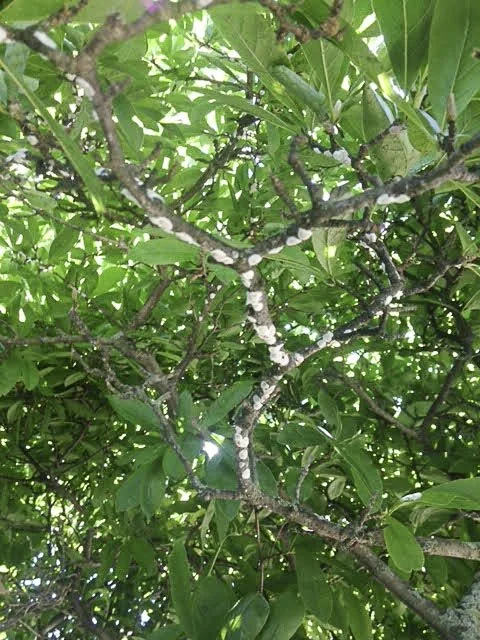Magnolia Scale
Magnolia scale is a soft-bodied scale insect common in Wisconsin. It is the largest of the soft-bodied scale insects (adult females can reach sizes of ½”) and it has a piercing-sucking mouth part, which is used to feed on the sap of the host tree. On shrubs or trees with higher infestations scale feeding will weaken the tree, leading to branch dieback and eventual death of the host. As the insect feeds honeydew, a sweet and sticky substance, is excreted onto below foliage and/or surfaces. Honeydew is the substrate on which blacky sooty mold grows. Honeydew may also attract other insects, such as wasps and ants.
Signs & Symptoms of Magnolia Scale
Sooty mold is commonly the first scale infestation sign that homeowners notice. Upon further investigation, pod-like “bumps”, resembling tree buds, can be found. These are the female scale insects. As the season progresses, Magnolia scale adults enlarge and produce a waxy covering which may make them more distinguishable.
Magnolia Scale Life Cycle
Magnolia scale has 1 generation per year, and adults are the immobile phase of the insect’s life cycle. They are also not readily controlled by any treatment interventions, but will die off naturally after giving birth during late summer. Magnolia scale overwinters as nymphs on the twigs of the host tree. In spring, as degree days accumulate, the nymphs come out of dormancy and begin feeding. There are both male and female scale nymphs and, as they mature, the males develop into winged, gnat-like insects. After mating, the males die. At this time, females begin to change color to a dark purple, put out a waxy covering, and grow well into mid-summer. The immobile females lay eggs, which hatch into crawlers later August through early October. Crawlers are the mobile phase of the insect life-cycle, how the insect spreads, and is the phase that is vulnerable to treatment intervention. After finding a place to settle in for winter, the nymphs briefly feed before going dormant for the season.
Managing Magnolia Scale
Magnolia scale management can be complex, and Innovative Tree Care utilizes an integrated pest management (IPM) protocol to achieve control. We take care to minimize impacts to insect pollinators and other beneficials, and our treatments are meant to target Magnolia scale directly. Treatment focuses on both improving overall tree or shrub health, and targeting the vulnerable crawler stage of the insects’ life cycle. Systemic insecticides, biostimulants, sprays of oils and insect growth regulators, insecticide sprays, and dormant oil applications are all options available. It can take 1-2 (or more) seasons for trees to fully rebound and often a variety of treatments are recommended to achieve complete control, and get trees scale-free. Preventative management can also include not planting highly susceptible cultivars, such as Star and Saucer Magnolia.


